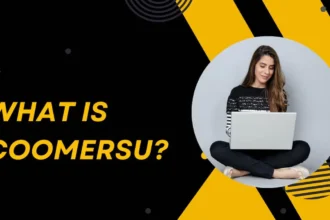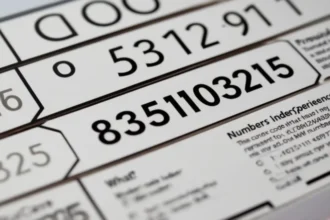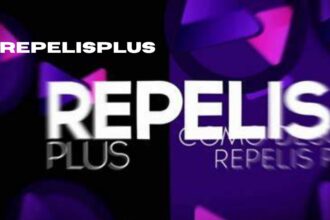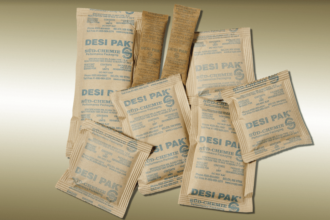Book covers and high-quality content serve as the critical first impression for readers in the self-publishing market. A well-designed cover and polished book can distinguish a title amidst fierce competition. Media techniques, rooted in visual and digital expertise, offer self-published authors tools to elevate their work.
This article explores three innovative media strategies to create standout book covers and creating contetn that captivate and sell. With millions of titles vying for attention on platforms like Amazon, a cover’s ability to grab interest in seconds is paramount. Advances in technology and design software have leveled the playing field, enabling authors to produce professional-grade results affordably. These methods blend creativity with practicality, tailored for the modern self-publishing landscape.
Understanding the Power of Visual Media
Colors, fonts, and imagery shape how readers perceive a book. Warm tones may evoke emotion, while sharp contrasts signal boldness. Studies show that 80% of purchasing decisions hinge on visual appeal, underscoring the cover’s role. Subtle cues, like jagged edges for thrillers or soft pastels for romance, tap into subconscious expectations. Research from Nielsen indicates that readers spend less than three seconds scanning a thumbnail online, amplifying the need for instant impact. Effective designs align with cultural trends, ensuring relevance across diverse audiences.
Lessons from Successful Covers
Books like The Martian by Andy Weir demonstrate how minimalist design paired with thematic imagery can resonate. Self-published successes often balance simplicity with genre-specific cues, a principle applicable to any project. Covers like Hugh Howey’s Wool use stark silhouettes to hint at dystopian themes, proving less can be more. Analysis of top sellers reveals consistent use of bold typography and uncluttered layouts. These examples highlight the value of clarity over complexity, a lesson drawn from years of market data. Aspiring authors can study such patterns to replicate proven formulas.
Tools of the Trade
Accessible platforms like Canva, Adobe Express, and AI-driven design software empower authors. These tools bridge the gap between amateur and professional output, making media skills attainable. Canva offers drag-and-drop interfaces with pre-made templates, ideal for beginners. Adobe Express adds flexibility for custom edits, while AI tools like Midjourney generate unique artwork from text prompts. Tutorials on YouTube further shorten the learning curve, guiding users through each platform’s features. Costs range from free to modest subscriptions, fitting tight budgets common among self-publishers.
Media Technique #1: Leveraging AI to Write the Book
AI tools, such as language models, assist in drafting manuscripts, brainstorming ideas, or refining prose. This technology accelerates content creation, offering a foundation for cover design. Platforms like Publishing AI or Sudowrite produce chapters from outlines, freeing authors to focus on vision. Algorithms analyze genre tropes to suggest plot twists or character arcs, streamlining the process. The result is a manuscript ready faster than traditional methods, often in weeks rather than months. Integration with cover design begins here, as AI outputs shape the book’s visual identity.
Connecting AI to Covers
Themes or titles generated by AI can inspire cohesive visuals. A dystopian novel drafted with AI might suggest metallic textures or stark typography, aligning content with presentation. For instance, an AI-crafted tagline like “Echoes of the Void” could lead to a cosmic, minimalist cover. This synergy ensures the cover reflects the story’s essence, not just its surface. Tools like DALL-E can even mock up complementary artwork, tying text and image tightly. Consistency across these elements builds a marketable package readers recognize instantly.
Steps to Implement
Authors can select an AI platform (e.g., Grok or Jasper), input genre-specific prompts, and extract key phrases or concepts. These outputs inform mood boards or briefs for designers, ensuring synergy between text and cover. Start with broad inputs like “epic fantasy with dragons,” then refine to specific scenes or quotes. Export results into a document, highlighting vivid descriptions for visual translation. Collaborate with a designer or use AI art tools to sketch initial concepts. Review and tweak outputs to avoid formulaic pitfalls, preserving originality.
Advantages and Challenges
Speed and creativity stand out as benefits, though human editing remains essential to refine AI-generated material. Over-reliance risks generic results, but careful curation mitigates this. AI can produce 10,000 words daily, outpacing most writers, yet tone may feel mechanical without adjustment. Costs are low—many tools offer free tiers—making it accessible. Ethical debates around AI authorship persist, though practical use focuses on assistance, not replacement. Balance ensures a unique voice shines through.
Real-World Application
Consider a fantasy tale crafted with AI, featuring a dragon-centric plot. The cover could reflect this with a sleek, AI-suggested tagline like “Wings of Eternity” atop a fiery illustration. AI might describe a climactic battle in vivid detail, inspiring a dynamic dragon silhouette against a crimson sky. Paired with bold gothic fonts, the design screams epic adventure. Marketing materials, like a blurb, could echo AI’s output, reinforcing the brand. This approach showcases AI’s role as a creative springboard.
Media Technique #2: Mastering DIY Graphic Design
Balance, contrast, and typography define effective covers. A cluttered layout confuses, while harmonious elements draw the eye. Genre norms—bold fonts for thrillers, elegant scripts for romance—guide decisions. Negative space prevents overwhelm, letting key features stand out. High contrast, like white text on dark backgrounds, boosts legibility at small sizes. Consistency in alignment ties the composition together, signaling polish.
For those new to the process, resources like Reels Media’s A Beginner’s Guide to Blue Flame Publishing provide foundational insights into platforms that streamline self-publishing, complementing the media strategies outlined here.
Software Solutions
Free tools like Canva or GIMP, alongside premium options like Photoshop, cater to varying skill levels. Each offers templates and customization, democratizing design for self-publishers. Canva’s library includes genre-specific layouts, updated monthly. GIMP rivals Photoshop’s depth without the cost, though its interface demands patience. Photoshop subscriptions unlock advanced layering, ideal for intricate projects. Online communities provide free plug-ins and presets, expanding functionality.
Designing the Cover
Start by selecting a style matching the book’s genre. Source royalty-free images from sites like Unsplash, then layer text strategically. Test readability at thumbnail size to ensure impact on digital platforms. Adjust image resolution to 300 DPI for print quality, avoiding pixelation. Use grids to align elements precisely, maintaining symmetry. Export in multiple formats (e.g., JPEG for web, PDF for print) to cover all bases.
Common Pitfalls to Avoid
Overloading with details or using clashing colors diminishes appeal. Consistency in font size and spacing maintains professionalism, critical for market success. Amateur errors include tiny text, lost in busy backgrounds, or mismatched aesthetics—like comic fonts on serious novels. Ignoring aspect ratios distorts online previews. Previewing on mobile devices catches issues early. Genre research prevents tone-deaf choices, keeping designs competitive.
Media Technique #3: Incorporating Video Teasers into Cover Concepts
Video teasers extend a cover’s reach, offering dynamic previews. Platforms like Instagram and TikTok thrive on such content, amplifying visibility. Short clips—15 to 30 seconds—fit attention spans, driving clicks. Data shows video posts garner 38% more engagement than static images. Teasers double as ads, cutting marketing costs. They transform a cover into a storytelling tool, not just a static image.
Creating Effective Teasers
Tools like Adobe Premiere Rush or InVideo animate static cover elements—think fading titles or zooming imagery. A 15-second clip can hook viewers, driving interest. Import cover files, then add transitions like dissolves or pans for polish. Sound effects or royalty-free music enhance mood—creepy whispers for horror, upbeat tunes for comedy. Export in vertical formats for mobile-first platforms. Basic edits take under an hour with practice.
Integrating with Cover Design
Covers built with video in mind use bold, scalable assets. A horror novel’s blood-drip effect, for instance, transitions seamlessly into a teaser, enhancing cohesion across media. High-resolution elements ensure clarity in motion. Simple designs animate better—complex details blur at speed. Test animations against the static cover to maintain brand unity. This foresight saves redesign time later.
Practical Example
A romance cover with a floral border could animate petals falling in a video, paired with a soft tagline reveal. This reinforces the book’s tone in a memorable way. Add a gentle piano track to deepen emotion, sourced from sites like Epidemic Sound. Fade the title in over five seconds for a dreamy effect. Post on Reels with hashtags like #BookTok, targeting readers. Engagement spikes when visuals match the story’s heart.
Testing and Refining the Cover
Social media polls or A/B testing on Amazon KDP reveal reader preferences. Presenting two cover options online quickly highlights the stronger contender. Platforms like Facebook Groups host indie author communities eager to weigh in. Ask specific questions—e.g., “Which font feels more mysterious?”—for actionable input. Run tests for 48 hours to capture trends. Early feedback prevents costly missteps post-launch.
Leveraging Analytics
Engagement metrics from video teasers—views, likes, shares—signal what resonates. High interaction suggests a winning design, while low response prompts tweaks. Tools like TikTok Analytics track watch time, showing where viewers drop off. Compare click-through rates on Amazon ads with different covers. Numbers cut through subjective bias, grounding decisions in data. Monitor trends over a week for reliability.
Iterative Improvement
Adjustments based on data refine the final product. Subtle shifts, like altering a font or hue, can significantly boost appeal without starting over. Swap a muted palette for vibrant tones if feedback flags dullness. Resize text if analytics show low mobile readability. Re-test changes to confirm improvement. This cycle hones the cover into a market-ready asset.
Conclusion
Combining AI-assisted writing, DIY graphic design, and video teasers creates a powerful toolkit for self-publishers. These media techniques transform a book cover into a marketing asset, blending creativity with strategy. Authors equipped with these skills can compete confidently, turning vision into sales. The process demands experimentation, but accessible tools lower the barrier. Success lies in adapting to reader tastes, a strength of these methods. Self-publishing thrives when media meets storytelling head-on.

















